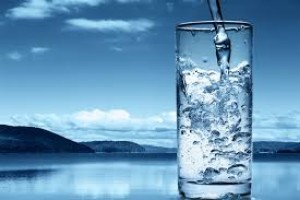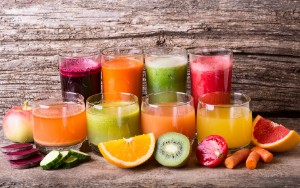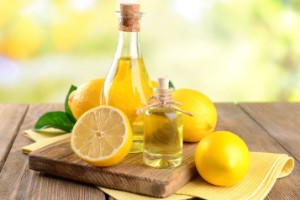How beer affects the human liver — facts about the harm and possible benefits
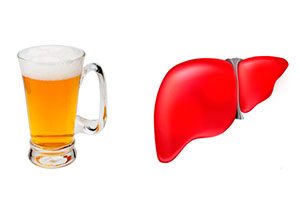 Beer is considered to be a relatively natural product containing a low percentage of alcohol. Many people are reassured by this statement, and they begin to believe that a hoppy drink is not so harmful, if you think about it.
Beer is considered to be a relatively natural product containing a low percentage of alcohol. Many people are reassured by this statement, and they begin to believe that a hoppy drink is not so harmful, if you think about it.
And indeed, Some studies confirm that beer causes less damage to the liver than pure alcohol (the total dose of alcohol is the same in both cases). Unfortunately, no other studies have yet been conducted comparing the effects of beer with other alcoholic beverages, such as wine or cognac.
In any case, beer contains alcohol. And the destructive effect of alcohol on the human liver has been confirmed by repeated and large-scale research . Even if you don't often allow yourself to drink, you will still destroy your liver a little with each glass you drink.
In this article, we will look at the effect of an intoxicating drink on the liver, and also tell you how to minimize the harmful effects.
Content
Effects on the liver
 Beer is a low-alcohol drink. Sometimes you can see a non-alcoholic variety on the shelves of stores. Beer, of course, contains a much lower percentage of alcohol than, for example, vodka, whiskey or cognac.
Beer is a low-alcohol drink. Sometimes you can see a non-alcoholic variety on the shelves of stores. Beer, of course, contains a much lower percentage of alcohol than, for example, vodka, whiskey or cognac.
But this does not mean that this drink is safe for our liver and the body as a whole.
Most beer varieties contain an average of 4-8% ethanol. In low-alcohol, this content is 0.2-0.6%.
The so-called non-alcoholic variety in reality also contains a certain percentage of alcohol in the composition, it's just much less there than in other varieties.
Regardless of what kind of beer you consume, pay attention to the following facts about the effect of any alcohol on the liver:
- If the critical amount of alcohol consumed exceeds all norms, then the liver begins to fail and stops coping with all the loads that fall on it. The gland does not have time to filter out all incoming substances, which leads to the ingestion of toxins into the human body. They cause destruction of brain tissues and of the nervous system ;
- If alcohol in such volumes is consumed systematically, then the liver blocks regenerative processes in its tissues. The dead cells begin to be replaced by a fatty layer, the increase of which leads to the development of cirrhosis and hepatosis.
Long-term effects of regular consumption
Uncontrolled consumption of foam drink in unlimited quantities can cause the development of many severe liver diseases.
Most often, large doses of beer lead to the development of the following disorders:
- Liver failure;
- Alcoholic hepatitis;
- Cirrhosis;
- Fatty hepatosis.
In addition to the malfunction of the gland, other body tissues are also adversely affected: hair falls out and thinns, nail plates peel off, skin becomes dry, dehydrated and flabby, appetite worsens, is disturbed concentration of attention .
1. Hormonal disorders
Male representatives suffer more from this.
 Regular consumption of beer causes hormonal failure, which is expressed in an increase in the pelvis and mammary glands, changes in the timbre of the voice, the appearance of a saggy belly.
Regular consumption of beer causes hormonal failure, which is expressed in an increase in the pelvis and mammary glands, changes in the timbre of the voice, the appearance of a saggy belly.
Most often, such manifestations can be eliminated by going on a diet and refusing to drink alcoholic beverages (especially beer). Physical exercises also help to get rid of imperfections.
2. Alcoholic hepatitis
Young people are most often affected by this pathology. There is a development of inflammatory and infectious processes that the organs cannot cope with on their own.
The lack of proper therapy will eventually lead to the formation of a malignant tumor and then death.
3. Fatty hepatosis
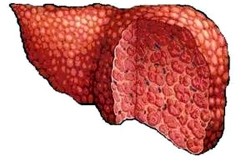 Fatty hepatosis is a chronic accumulation of fatty deposits on the walls of the liver, which leads to blockage of vascular channels
and gland cells. This process starts with unlimited alcohol consumption.
Fatty hepatosis is a chronic accumulation of fatty deposits on the walls of the liver, which leads to blockage of vascular channels
and gland cells. This process starts with unlimited alcohol consumption.
When the gland stops coping with all the toxins that alcohol carries, it stops the regeneration of its own tissues.
As in the case of cirrhosis, a fat layer begins to accumulate in the gaps left after the death of cells. Usually this pathology is a precursor to cirrhotic lesions.
4. Cirrhotic lesion
Many people doubt whether there can be cirrhosis from drinking regular beer. Despite the fact that the percentage of alcohol content in beer is low compared to other alcoholic beverages, a large amount of drunk foam drink has a more harmful effect on organs than the same vodka. People rarely limit themselves to one glass of drink, they sometimes drink more than 2-4 liters per day.
Regular consumption of large amounts of alcohol blocks the regenerative functions of the liver. Regenerative processes fade away, and the liver begins to collapse. The "gaps" are filled with a fat layer. This leads to the development of cirrhosis.
What does the appearance of pain after drinking mean?
Considering all that has been said, the potential appearance of acute liver pain immediately after drinking beer should be discussed. Why is this happening and what to do?
There are many reasons for the appearance of such pain (one is worse than the other).
Here are some of the main reasons why the liver gland may hurt immediately after drinking beer or any other alcohol-containing drink:
- Hepatic fibrosis . This is not the most common disease among alcohol addicts, but it does not make it less unpleasant. The disease occurs when the gland tissues begin to enlarge and expand, occupying the space around the venous mesh. Pain occurs even without alcohol consumption. Concomitant symptoms are belching bitterness, nausea, lethargy and weakness. In the absence of treatment, cirrhosis may develop;
- Hepatomegaly. Pathology develops against the background of a malfunction in the process of protein metabolism in the gland. It usually proceeds without visible symptoms, but people who often drink alcohol may have pain in their right side;
- Alcoholic type steatosis . One of the most common pathologies among alcohol addicts. It occurs against the background of regular consumption of high doses of alcohol-containing products. One of the symptoms of this disease is constant pain in the right side, a feeling of heaviness on the liver.
The diet also plays an important role here. The abundance of fatty, fried, spicy, smoked food and alcohol in total give not only the development of pathologies of the liver, but also of the pancreas.
Naturally, the liver can also hurt with the developed pathologies described in the previous paragraph. So at the first symptoms, give up drinking beer and any other alcoholic beverages and run to the doctor.
Should I give preference to the non-alcoholic type?
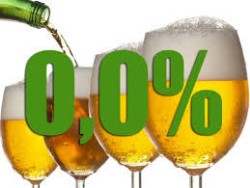 This drink can only be called non-alcoholic conditionally. Alcohol is present in any beer variety, one way or another. It's just that in this type of drink, its percentage is much lower than in others.
This drink can only be called non-alcoholic conditionally. Alcohol is present in any beer variety, one way or another. It's just that in this type of drink, its percentage is much lower than in others.
But this does not mean that this variety will not harm the body. In fact, non-alcoholic beer also has a devastating effect on the liver and kidneys, just for noticeable changes you need to drink a slightly larger dose.
But of course, choosing the lesser of two evils, it is worth giving preference to non-alcoholic beer.
4 Rules for minimizing harm
In modern conditions, it is quite difficult to completely stop drinking alcohol. What kind of gatherings in a bar with friends can do without a glass of good beer? In such situations, you should always remember the measure, as well as resort to some preventive measures to minimize the unpleasant consequences of drinking a foamy drink:

- Know the measure. In fact, this rule applies to many areas of our lives. Drink only a high-quality product in small quantities. Take long breaks between use;
- Take restorative medications. The day after the party, you should take anti-intoxicating drugs. Similar products are available in any pharmacy. They are aimed at eliminating the symptoms of a hangover and accelerating the elimination of toxins from the body. Also drink as much water with lemon as possible;
- Take decoctions and milk thistle tablets . During the period when you do not consume any alcohol-containing beverages, make it a rule to take drugs based on milk thistle grass. It contains components that trigger regenerative processes in liver tissues;
- Start eating right. No matter how hackneyed this advice is, follow it. A healthy diet will help significantly reduce the load on the liver, which, in turn, will help it recover several times faster.
If you were good and followed all these simple rules, but the disease developed, then immediately consult a doctor and start treatment. The key to successful therapy lies in its timeliness and complexity. Be sure to give up alcohol in any form. Even if the jar says "non-alcoholic", then do not rush to grab it from the shelf. Any kind of beer contains alcohol, it's just that somewhere there is more of it, and somewhere less.
Is there any benefit?
Surprisingly, along with all the harmful properties of the foam drink, there are also beneficial effects. Of course, beer can have a positive effect on the body only if you do not have any contraindications to its consumption, as well as when an adequate measure is observed. It is best to use the so-called "live beer", it does not contain preservatives and taste stimulants.
The benefits of beer:
- Slightly lowers blood pressure;
- Has a diuretic effect;
- Removes unwanted salts from the body;
- Strengthens vascular walls ;
- Improves appetite;
- Prevents premature aging.
Of course, these effects should not be perceived as an excuse to drink beer in the presence of some diseases accompanied by these symptoms. This is rather a pleasant bonus when drinking beer properly, rather than a way to cure something.
Interesting video
Finally, we recommend you to familiarize yourself with the following videos:
;
Conclusion
Despite all the assurances of beer manufacturers, this drink causes the same harm to our body as any other alcohol. After making sure that the product contains a small percentage of ethyl alcohol in the composition, people begin to pour liters of this "safe" potion into themselves without measure.
Eventually it ends up with alcoholic hepatitis or cirrhosis. So do not be deceived by the external harmlessness of beer. The measure is good in everything, and even more so when it comes to eating foods that can harm your liver.

